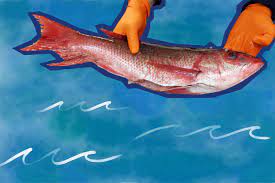Blue Foods And Its Advantages:

A report titled Environmental performance of blue foods has stated that the Aquatic or blue foods can be made more environmentally sustainable than they are now.
- The report is published as part of the Blue Food Assessment (BFA).
- The BFA is a collaboration between Sweden-based Stockholm Resilience Centre, United States-based Stanford University and the non-profit EAT.
About Blue Foods and its Advantages:
- Blue foods are food derived from aquatic animals, plants or algae that are caught or cultivated in freshwater and marine environments.
- They are found to rank more highly than terrestrial animal-source foods in terms of their nutritional benefits and potential for sustainability gains.
- Many blue food species are rich in important nutrients like omega-3 fatty acids, vitamins and minerals.
- On average, the major species produced in aquaculture, such as tilapia, salmon, catfish and carp, were found to have lower environmental footprints comparable to terrestrial meat.
About the Report:
- The report has uncovered that Blue foods and the waters in which they grow will have an essential role to play in the shift towards healthy, equitable and sustainable food systems.
- The production of blue food generates the fewest greenhouse gas and nutrient emissions and uses the least land and water.
- Capture fisheries refers to all kinds of harvesting of naturally occurring living resources in both marine and freshwater environments.
- These have the potential to reduce greenhouse gas emissions through improved management and optimising gear types.
- Investing in innovation and improving fisheries management could increase consumption even more and have profound effects on malnutrition.
- Promotion of Blue food will help in fulfillment of many Sustainable development Goals (SDG 2 – Nutrition and 14 – Sustainable use of marine resources).




